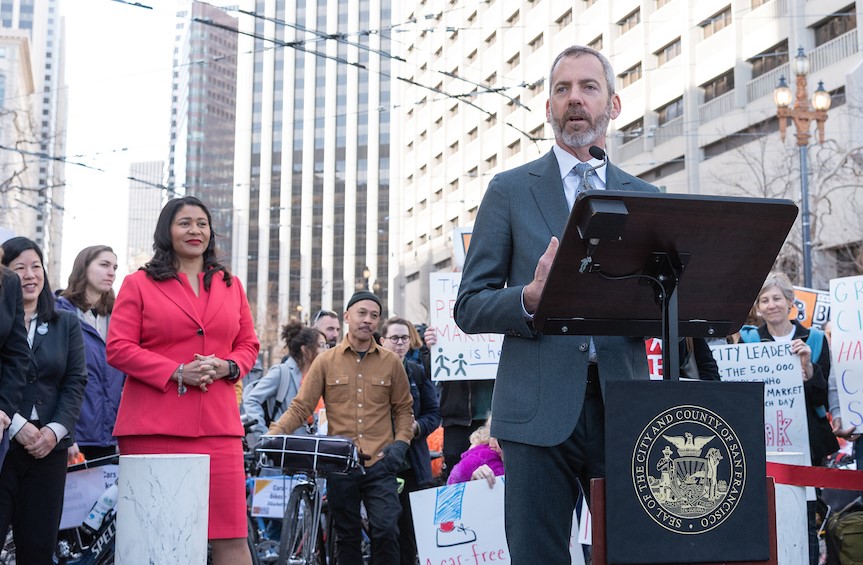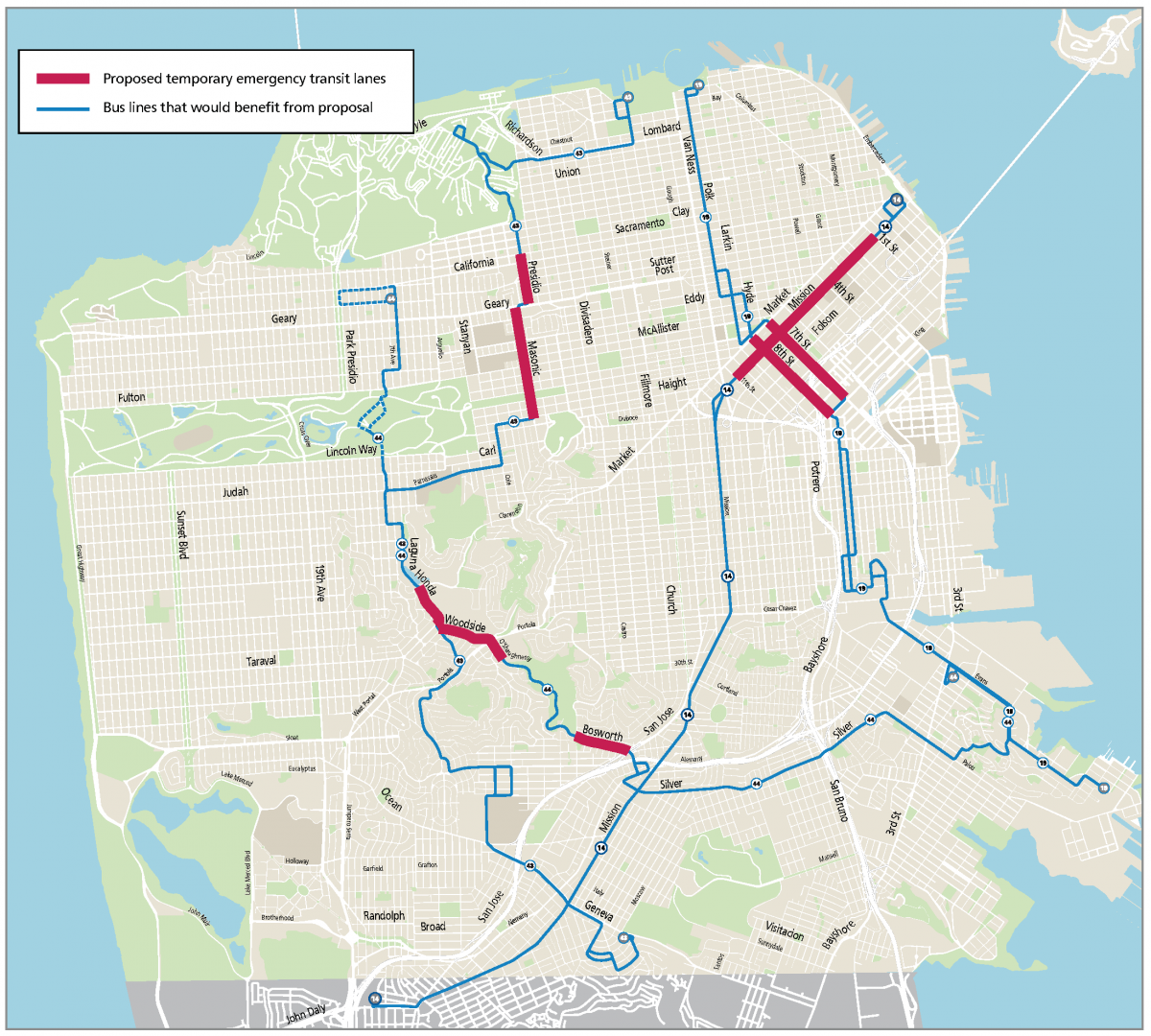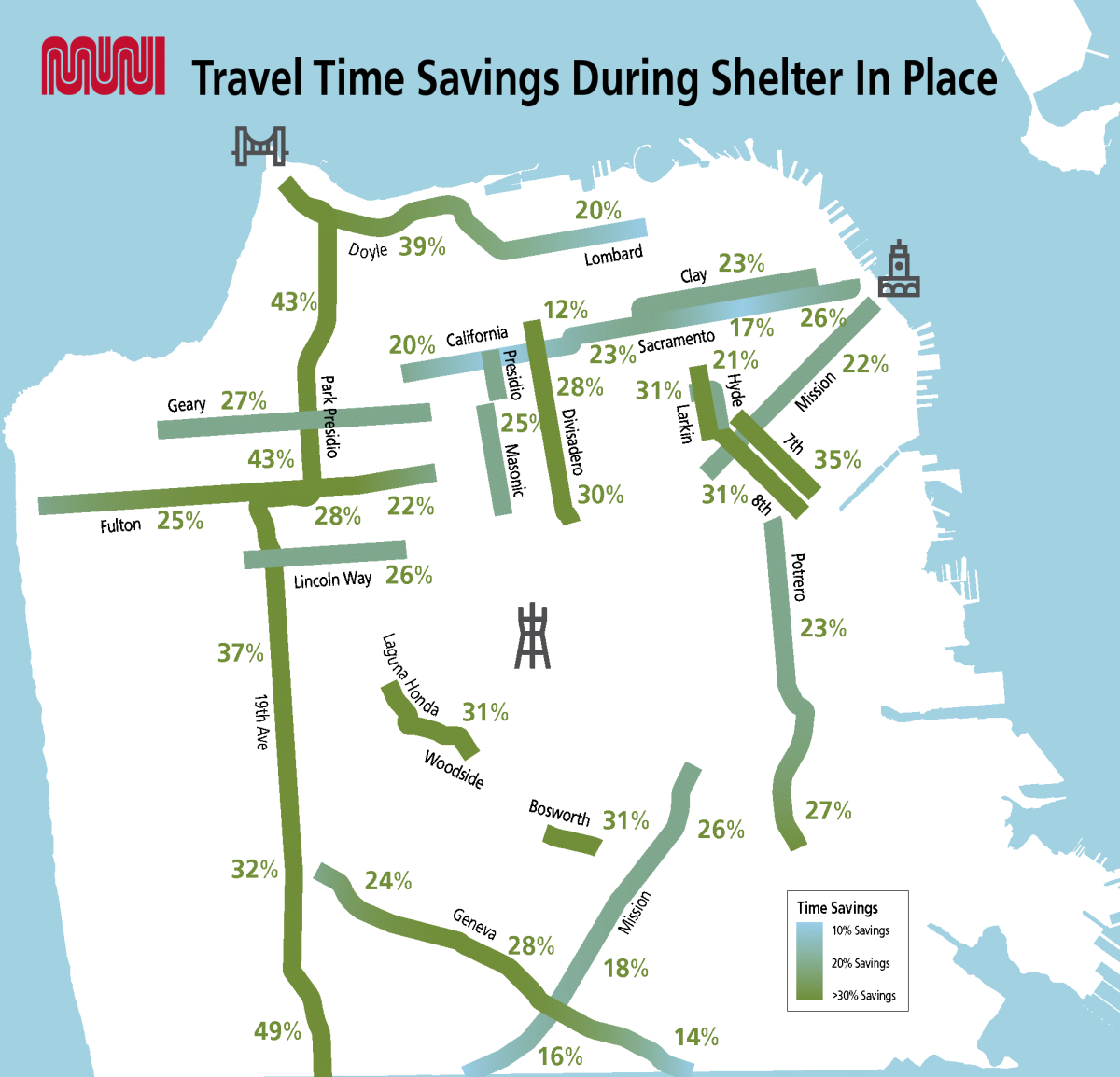Tuesday, June 30, 2020
Show HN: CSSKatas – A better way to sharpen your CSS skills https://news.ycombinator.com/item?id=23696776
Show HN: Program “Greppy”, a 2-wheeled robot, using a new robotics language https://news.ycombinator.com/item?id=23696193
Monday, June 29, 2020
Show HN: Android OCR-Keyboard https://news.ycombinator.com/item?id=23684039
Sunday, June 28, 2020
Show HN: Trading Stocks from the Command Line https://news.ycombinator.com/item?id=23673613
Leading with Pride
By
 Jeffrey Tumlin addresses participants and attendees, including Mayor London Breed, at the Better Market Street opening day ceremony on Jan. 29.
Jeffrey Tumlin addresses participants and attendees, including Mayor London Breed, at the Better Market Street opening day ceremony on Jan. 29.
This week we are profiling several agency leaders, including Director of Transportation Jeffrey Tumlin, on their thoughts about this month’s Pride celebrations and their experience with equity and transit in San Francisco.
Our agency has participated as a sponsor and with a parade contingent in San Francisco’s world-renown Pride celebration for many years. Last week Director of Transportation Jeffrey Tumlin logged in with our communications team to share some of his background and perspective on the 50th anniversary of Pride.
The questions and answers have been edited for length.
Q: What does the 50th anniversary of Pride mean to you?
A: I think the 50th anniversary of Pride is interesting in the context of the George Floyd anti-police brutality protests that are happening in San Francisco. Pride started as a riot. We celebrate the Stonewall uprising, but we forget that years before that the Compton’s Cafeteria Riot happened right here in San Francisco. This was also a bunch of courageous, angry transgender people who felt so hopeless about not being respected and loved in society and so hated by the establishment, that they had nothing to lose and fought back against police brutality. We need to remember that, and we need to take the lessons of our fight for gay equality and understand our responsibility to join our brothers and sisters in fighting for equality and racial equality.
Q: In what ways do you feel the equity work at our agency serves those who identify as LGBTQ+ colleagues?
A: Our equity work at the SFMTA has both an internal focus and an external focus. All our equity work is a call to action. It recognizes our history of not only not valuing certain types of people but also actually undermining their rights and opportunities to serve. So, equity work is not only about treating people equally, it’s about correcting for past injustice. It’s remarkable that even here in San Francisco there’s still so much work we need to do.
Q: In what ways can or does transit in general serve or strengthen the LGBTQ+ community?
A: Transit is very gendered. Transportation is very gendered. If we design our mobility system to serve cisgender young white men, we serve cisgender young white men. If we design our mobility spaces to serve women, people with disabilities and people of color, we end up serving everyone. The design of mobility systems can make us all feel like we are welcome and that we also have responsibilities to uphold in public to make everyone else feel welcome. So, a question that I always ask myself is, “Would my trans friends feel safe here?”
Q: And in answering that, what looks different? How do you recognize that?
A: That’s something I try to ask other people questions about. I’m queer, but I’m also an affluent middle-aged white guy. There are perspectives where I always need to go talk to other people in order to better understand. That’s part of why equity work inside the agency is important for us to deliver quality service to our customers outside the agency.
I know a bit about how to design spaces that are welcoming for women and children. I know a bit about how to design services that are inclusive of transgendered people, but I always need to check with the experts. “Hey, I think I’ve got this right. Is this?” And often I’ve missed some critical detail because it’s not part of my lived experience.
The factors that make a space trans-friendly or queer-friendly or welcoming to women and children are very complex. There aren’t simple rules, but studies have shown if a few younger women start biking, particularly women of color, that tells others that this is an appropriate activity for everyone. And suddenly it changes attitudes.
Q: You’ve mentioned that you see a strong connection between the AIDS and the COVID-19 public health crises. Can you discuss how those are related?
A: It’s been strange having a seat at the table, as the head of a city department, quietly listening to conversations about how the city is responding to COVID-19. I’ve been able to observe that all the institutional mechanisms set up by the Bay Area county health directors back in the 80s to respond to the AIDS health crisis were still there. It’s why the county health directors made the decisions they did and Mayor Breed acted as quickly as she did. Those decisions saved thousands of lives, particularly compared to regions that waited just a couple of weeks longer.
Published June 28, 2020 at 08:49PM
https://www.sfmta.com/blog/leading-pride
Show HN: PHONK, JavaScript scripting for Android devices https://news.ycombinator.com/item?id=23673323
Show HN: Chrome Extension that lets you start WhatsApp Web chat in a click https://news.ycombinator.com/item?id=23672852
Show HN: Search All Shopify Stores https://news.ycombinator.com/item?id=23672342
Saturday, June 27, 2020
Show HN: Take notes from the browser address bar https://news.ycombinator.com/item?id=23666967
Show HN: Yet Another Shell Server https://news.ycombinator.com/item?id=23666319
Friday, June 26, 2020
Show HN: A Reddit reader that looks like the frontpage of a print newspaper https://news.ycombinator.com/item?id=23658721
Show HN: Harmony – A cross machine shell history sync tool https://news.ycombinator.com/item?id=23656428
Show HN: The Slice – Newsletter for Founders, by Founders https://news.ycombinator.com/item?id=23658431
Fast-Tracking Transit Lanes to Help the City's Recovery
By Amy Fowler
 Map of temporary emergency transit lanes being proposed at the June 30 SFMTA Board of Directors meeting
Map of temporary emergency transit lanes being proposed at the June 30 SFMTA Board of Directors meeting
We don’t have a crystal ball to see into San Francisco’s future, but one thing is clear: a citywide economic recovery is dependent in large part on a transportation recovery. And while we work to come back from one crisis, we’re looking to avert another—traffic gridlock.
With hundreds of thousands of people dependent on transit to get around before COVID-19, our city is uniquely vulnerable to increased congestion. Congestion is already on the rise, and some studies are predicting that people may turn increasingly to private vehicles, turning the streets into a “Carmageddon” for both cars and transit. Our city’s streets simply don’t have room for more vehicles.
At the same time, COVID-19 has impacted our ability to provide Muni service. Service levels depend on the availability of operators, car cleaners, maintenance staff and other personnel to operate the system and support expanded cleaning protocols. To support physical distancing, our buses can only carry one-third of the number of passengers as they could before the pandemic. And, severe revenue cuts are also taking a toll. We estimate that we may only be able to provide 70% of pre-COVID-19 Muni service hours next year. If buses get stuck in traffic, that number could be even lower.
We need to ensure that transportation works for those who don’t have the privilege of working from home or using a private vehicle. Now more than ever, Muni is serving those riders who have no other options and are more likely to be people of color or from low-income households. In order to protect people who rely on transit from increased exposure to COVID-19 on slow or crowded buses, we need to act quickly to move more people with fewer resources.
One of the most effective tools we have to improve Muni travel time and reliability are transit lanes. Dedicated transit lanes allow buses to complete trips in less time and return into service more quickly, increasing vehicle frequency and moving more people with more space to physically distance. Emergency vehicles are also able to use the lanes to bypass traffic congestion.
The benefits these transit lanes bring are critically needed for Muni customers who have no other options during this public health emergency. We recently implemented a new transit lane on 4th Street and on June 16 the SFMTA Board of Directors approved new transit lanes as part of the Active Beale Street Project.
At a special meeting on Tuesday, June 30, the SFMTA Board will consider fast-tracking temporary emergency transit lanes that would benefit five Muni routes:
- 14 Mission and 14R Mission Rapid: Mission Street in SoMa
- 19 Polk: 7th and 8th Streets in SoMa
- 43 Masonic and 44 O’Shaughnessy: Locations on Presidio, Masonic, Laguna Honda, Woodside, and Bosworth streets
If approved, these temporary emergency transit lanes would be installed in late summer and striped only with white paint, “Bus/Taxi Only” stenciling and signage. Lanes will automatically be removed within 120 days after the emergency order is lifted, unless there is a public process to make a lane permanent.
These locations were chosen based on where the benefits are greatest, based on current ridership, travel time data and to prioritize routes that serve neighborhoods with high percentages of people of color and low-income households, including Ingleside, Outer Mission, Excelsior, Visitacion Valley, Bayview, Mission, SoMa and the Tenderloin.
On June 30, the Board will also consider delegating authority to the City Traffic Engineer’s Office to streamline the approval process for any future temporary emergency transit lanes. A public hearing would also be required for each corridor. The SFMTA is using travel time data to evaluate additional locations where adding temporary emergency transit lanes would achieve the biggest time savings and provide the greatest benefit. We will work with the community to evaluate and make any adjustments that are needed to the temporary transit lanes in real time based on public feedback and data monitoring.

At the beginning of the shelter-in-place, we saw massive time savings on several streets that don’t currently have transit lanes (see map), including the streets where temporary emergency transit lanes are proposed. Those are gains we’ll need to maintain to protect essential workers and our future economic recovery. Meanwhile, on most streets that already have transit lanes, there was no or very little improvement with the decreased traffic—demonstrating just how effective those lanes have been.
Delivering the city we want in the future, with a transit network that seamlessly connects people to jobs and neighborhoods to neighborhoods won’t come without tradeoffs. Temporary transit lanes will require removing some general-purpose lanes or parking in some places. As lanes are implemented we will be closely evaluating and gathering public feedback, and are prepared to make adjustments as we go—or even remove lanes—to ensure we meet the needs of the community and Muni customers.
Published June 26, 2020 at 04:38PM
https://www.sfmta.com/blog/fast-tracking-transit-lanes-help-citys-recovery